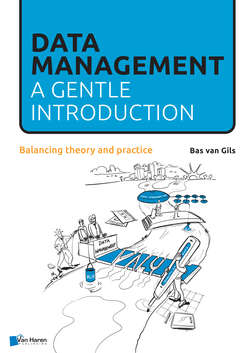Читать книгу Data Management: a gentle introduction - Bas van Gils - Страница 15
На сайте Литреса книга снята с продажи.
■ 4.1 THE CENTER OF THE UNIVERSE
ОглавлениеIn the introduction of chapter 2, I presented an analogy between processes as the value creation engine of the organization, and data as the fuel for this engine. The point of this analogy is that it is hard to meaningfully separate the two, as “data” and “process” are so intertwined. Yet, this book is about data management (DM) so this topic will be front and center in most of this book. More specifically, in part I, I will discuss DM and its functional areas from a theoretical perspective. I will attempt to do so in an objective manner1. In part II, I will offer good practices for building an effective data management capability.
While DM is important, it can hardly be discussed without considering its context. For understanding DM from a theoretical perspective, as well as for designing a program to build or improve a DM capability, it is recommended to take a systems perspective of the organization, meaning that (1) we should consider the organization as a system that operates in a specific context, (2) we should consider all relevant perspectives on this system as determined by key stakeholders, and (3) we should consider both structural properties of the system (i.e. how is it organized? Which “parts” can we distinguish?) as well as how it behaves (i.e. what happens in the organization? How does it behave in relation to its environment?).
With this in mind, I will position DM in relation to other (management) capabilities in the upcoming sections, keeping in mind the “golden triangle” in our field: data (DM), processes (business process management -BPM), and systems (IT management). I will also discuss two topics that are closely related to, or even part of, data management, but that did not get chapters of their own: information/data analysis, and database management. The section on enterprise architecture management will tie these three perspectives together. Figure 4.1 clarifies this further. I will also offer a philosophical consideration on the complexity of building or improving a DM capability as a backdrop for the chapters in part II of this book.
Figure 4.1 Positioning data management
